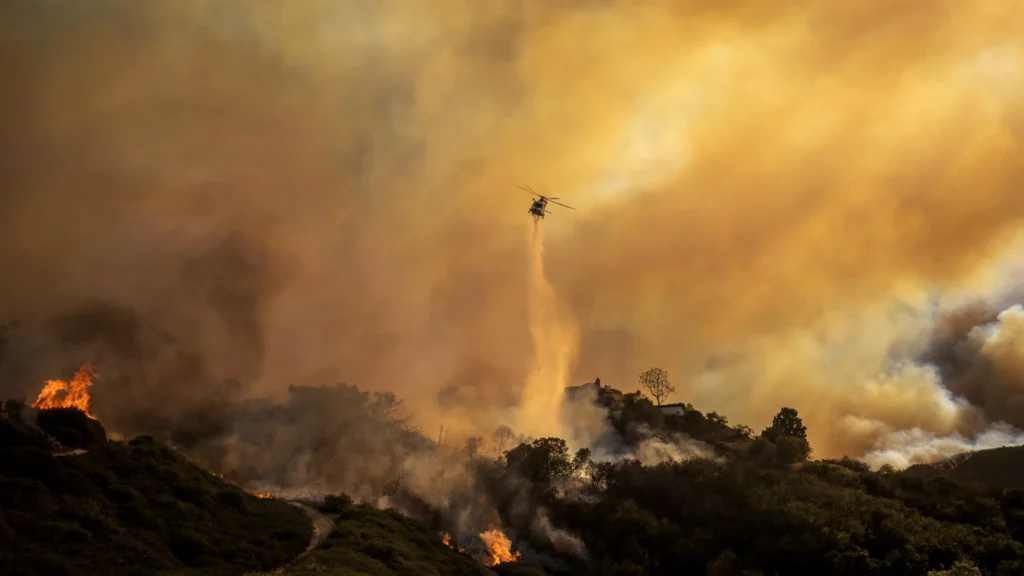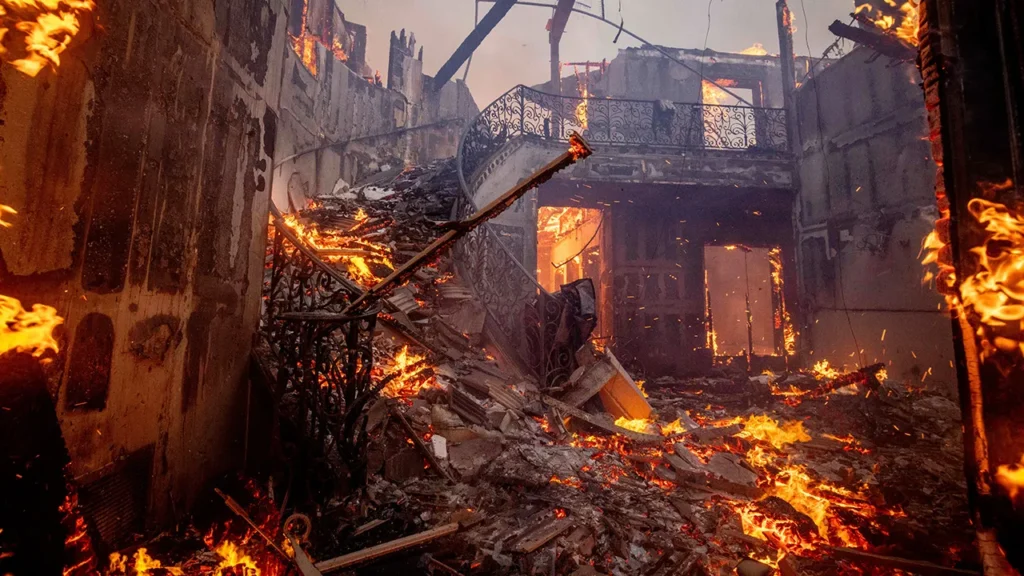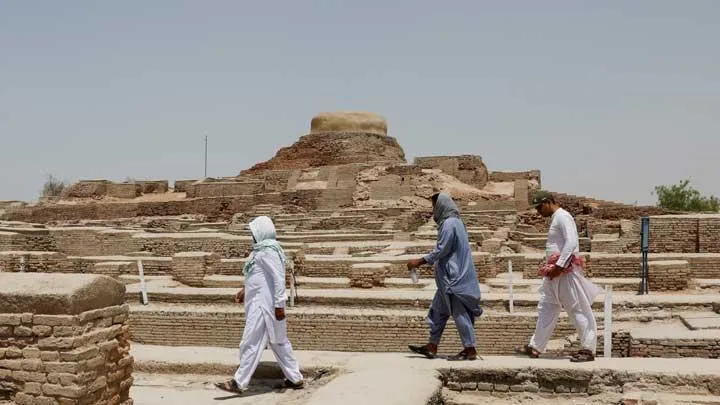Introduction
The Los Angeles firestorms, which began a week ago, have wreaked havoc across the region, leaving behind a trail of unprecedented destruction. The blazes, fueled by strong Santa Ana winds and dry conditions, have devastated communities, displaced thousands of residents, and caused billions of dollars in damages. As firefighters work tirelessly to contain the flames, the scope of the disaster continues to unfold, bringing with it widespread environmental, economic, and emotional impacts.

Wildfires are not uncommon in California, but the scale of the current crisis has drawn attention to the increasing severity of such disasters. Experts warn that climate change, urban sprawl, and insufficient preventive measures are creating a “new normal” of megafires that threaten the safety and sustainability of entire regions.
Key Points Overview
- The scale and intensity of the L.A. firestorms.
- Factors contributing to the unprecedented destruction.
- The human and environmental toll of the disaster.
- Ongoing firefighting efforts and challenges.
- Steps toward recovery and prevention.
The Scale and Intensity of the Firestorms
The L.A. firestorms have burned through over 500,000 acres of land, destroying thousands of homes, businesses, and public infrastructure. Entire neighborhoods have been reduced to ash, with iconic landmarks and vital resources lost to the flames. The economic toll is staggering, with estimates suggesting damages could exceed $10 billion, impacting insurance markets, local economies, and state budgets.

A Perfect Storm of Conditions
Several factors converged to create the catastrophic conditions:
- Prolonged Drought: Years of drought left vegetation tinder-dry, providing ample fuel for the fires.
- Santa Ana Winds: These strong, dry winds accelerated the spread of the flames, pushing them into urban and suburban areas at alarming speeds.
- High Temperatures: Record-breaking heat created an environment ripe for combustion, further exacerbated by the ongoing effects of climate change.
- Urban Encroachment: Expanding developments into fire-prone areas have increased vulnerability and reduced natural firebreaks.
Communities Affected
Hardest hit areas include:
- San Fernando Valley: Entire neighborhoods evacuated as flames engulfed homes, with reports of extensive damage to local schools and hospitals.
- Malibu: Loss of luxury properties and ecological reserves, including rare coastal habitats.
- Ventura County: Significant damage to agricultural land and local businesses, affecting livelihoods and food supply chains.
- Topanga Canyon: Historic sites and artistic communities have been heavily impacted, leaving a cultural void.

The Human and Environmental Toll
Displacement and Loss
The firestorms have forced over 100,000 residents to evacuate, with many seeking shelter in overcrowded facilities. Tragically, the disaster has claimed dozens of lives, with many more injured or missing. Families are now grappling with the loss of loved ones, homes, and livelihoods, facing an uphill battle to rebuild their lives.
Beyond immediate losses, there are long-term socioeconomic implications. Vulnerable populations, including low-income families and the elderly, are disproportionately affected, lacking the resources to recover quickly. The emotional toll is immense, with survivors reporting increased anxiety, depression, and post-traumatic stress.
Environmental Impact
The environmental consequences of the firestorms are severe and far-reaching:
- Wildlife: Thousands of animals have been displaced or killed, disrupting local ecosystems. The loss of habitat for endangered species could have long-term implications for biodiversity.
- Air Quality: Smoke and ash have caused hazardous air conditions, leading to spikes in respiratory illnesses and hospitalizations. Fine particulate matter from wildfires has spread across neighboring states, affecting millions.
- Soil Erosion: Burned landscapes are now prone to erosion, raising the risk of landslides and flooding during the rainy season. These secondary disasters could further devastate already-affected areas.
- Carbon Emissions: The firestorms have released massive amounts of carbon dioxide, contributing to global warming and creating a feedback loop of increasing fire risk.

Ongoing Firefighting Efforts
Firefighters from across the country have joined local crews to battle the inferno. Despite their heroic efforts, containment remains a significant challenge due to the magnitude and unpredictability of the fires. Over 10,000 personnel are on the front lines, supported by advanced technology and community volunteers.
Challenges in Containment
- Extreme Conditions: High winds and low humidity complicate containment strategies, making it difficult to establish firelines.
- Resource Limitations: The scale of the disaster has stretched resources thin, with firefighting equipment and personnel operating at maximum capacity.
- New Ignitions: Ember-driven spot fires continue to ignite new areas, often overwhelming containment efforts.
Advances in Firefighting Technology
- Aerial Support: Helicopters and planes drop water and retardants on hard-to-reach areas, providing critical support to ground crews.
- Satellite Monitoring: Real-time data helps track fire progression and predict hotspots, enabling faster response times.
- AI Systems: Predictive analytics aid in resource allocation and risk assessment, helping prioritize high-risk areas.
- Drone Surveillance: Drones equipped with thermal imaging cameras are being used to identify and monitor hidden fire activity.

Steps Toward Recovery and Prevention
Immediate Relief Efforts
- Federal Aid: Emergency funds and resources have been deployed to assist affected communities. FEMA has set up disaster recovery centers to provide immediate support.
- Volunteer Support: Nonprofits and local organizations are mobilizing volunteers to distribute food, clothing, and shelter. Donations of supplies and funds are being channeled through coordinated efforts.
- Mental Health Services: Counseling and psychological support are being offered to help survivors cope with the trauma and uncertainty.
Long-Term Strategies
- Rebuilding Infrastructure: Efforts are underway to rebuild homes, schools, and hospitals with fire-resistant materials and designs. Urban planners are emphasizing the importance of creating defensible spaces.
- Forest Management: Clearing dead vegetation and implementing controlled burns are essential steps to reduce fuel and mitigate future risks. Collaborative efforts between state and federal agencies are focusing on sustainable practices.
- Climate Action: Addressing the root causes of extreme weather events requires global cooperation. Investments in renewable energy, emission reductions, and green infrastructure are vital to mitigate the impact of climate change.
- Public Awareness Campaigns: Educating communities on fire prevention, evacuation plans, and emergency preparedness is critical to reducing human vulnerability.

Conclusion
The L.A. firestorms have underscored the urgent need for comprehensive disaster preparedness and climate action. As the region begins the long road to recovery, it is imperative to learn from this tragedy to prevent future catastrophes. Collaborative efforts among governments, communities, and individuals will be crucial in building resilience against such disasters. This crisis serves as a stark reminder of the fragility of our environment and the collective responsibility to protect it.
FAQs
Q1: What caused the L.A. firestorms to escalate so quickly?
A1: A combination of dry vegetation, strong Santa Ana winds, and high temperatures created ideal conditions for the rapid spread of the fires. Urban encroachment into fire-prone areas also played a significant role.
Q2: How can residents protect themselves during wildfire season?
A2: Residents should create defensible space around their homes, prepare emergency kits, and stay informed through official alerts. Participation in community drills and adherence to evacuation orders are also crucial.
Q3: What are the long-term effects of the firestorms on the environment?
A3: Long-term effects include loss of biodiversity, soil erosion, and degraded air and water quality. Recovery of ecosystems could take decades, with some species and habitats facing permanent loss.
Q4: How can communities prevent such devastating wildfires in the future?
A4: Effective prevention measures include improved forest management, stricter building codes, increased investment in firefighting technology, and public education campaigns. Addressing climate change is also essential to reducing fire risk.
Q5: Where can I donate to support wildfire victims?
A5: Donations can be made to organizations like the American Red Cross, California Community Foundation’s Wildfire Relief Fund, and local relief groups. Contributions of time and resources to grassroots organizations can also make a significant impact.
Q6: How can businesses contribute to wildfire recovery?
A6: Businesses can contribute by offering financial support, providing resources or services to affected communities, and implementing sustainable practices to reduce environmental impact.







